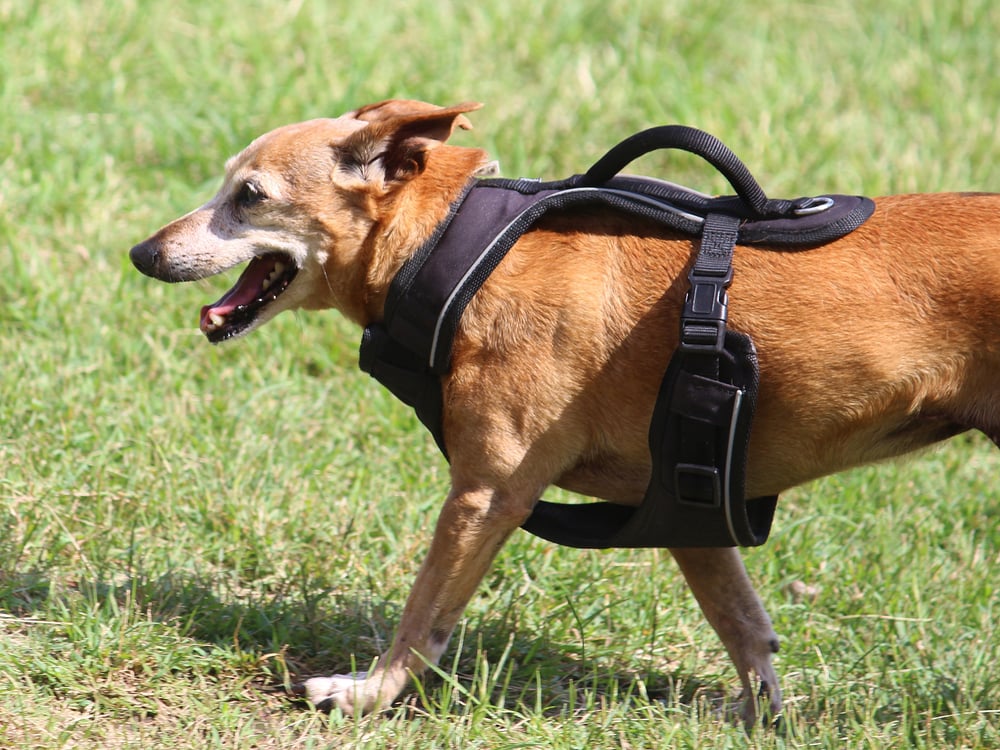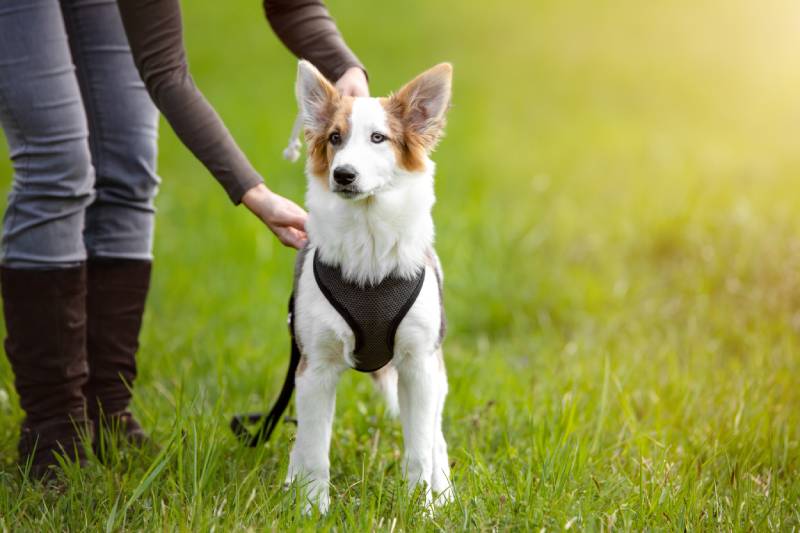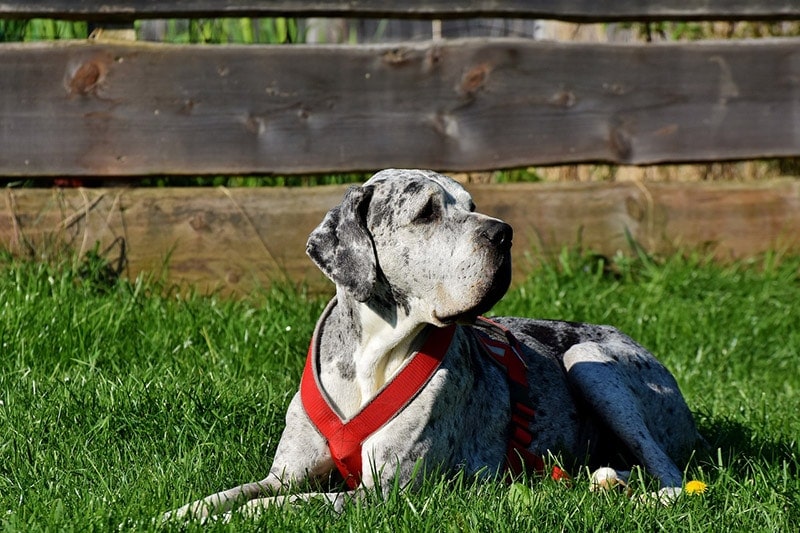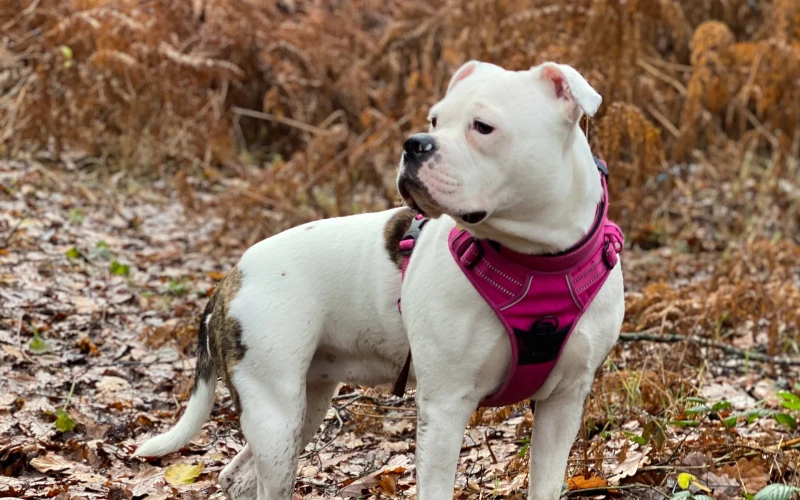
While a dog collar is useful as a tag carrier, every dog needs a harness as it provides extra support and safety when taking your dog for a stroll or run in the park.
Finding the right size harness is important for your dog’s safety and comfort, and that’s why learning how to attach a dog harness properly is such an important skill for dog owners to have. Dog harnesses usually have a built-in size, and it is vital to measure your dog to ensure the harness fits correctly.
In this article, we’ll discuss how you can measure your dog for a harness, how it should fit, and the types of harnesses that are available.
Before You Start
While harnesses are frequently sold by weight, it is best to use a measuring tape to get a more precise measurement. Knowing both your dog’s weight and measurements will help you find the best size harness for your dog.
The same methods should be used to measure your dog, whether it is small, medium, or large. Just make sure that you change the placement of the tape measure depending on your dog’s specific dimensions.
If your dog tends to move around a lot and doesn’t usually stand still, get a family member or friend to help you hold your dog in place while you take measurements.

The 4 Steps to Measure Your Dog for a Harness
A dog size chart will typically show four measurements: neck girth, chest girth, body length, and weight. Combining these measurements and weight will help you determine the correct size of your dog’s harness.
1. Neck Girth
The circumference of your dog’s neck is measured around where the collar hits. Wrap the tape measure just below the narrow part of the neck, where your dog usually wears a collar. If you are unsure, the correct spot is just above your dog’s shoulders. You’ll start just above their shoulders, at the nape of their neck, and wrap the tape down to the top of their chest and around to meet the other end. Remember, you will need two fingers to fit comfortably between your dog and its harness, so allow for that room when measuring.

2. Chest girth
The chest girth is the circumference of your dog’s chest. Find the widest part of your dog’s chest to measure your dog’s girth. The widest part of a dog’s chest is usually right behind the armpits, but measure from the bottom of your dog’s rib cage.
3. Body length
Body length is measured from the base of your dog’s neck to the base of its tail or from the beginning of its shoulders to the end of its hips.

4. Weight
Weight can also play a role in determining the appropriate size. You can weigh your dog using an ordinary bathroom scale. Weigh yourself and then hold your dog while standing on the scale. Subtract the first figure from the second to get your dog’s weight.
How Should a Dog Harness Fit?
A dog harness should fit snugly around your dog’s body, but it should never be too tight. There is a general rule of thumb for determining if your dog’s harness fits correctly and is snug enough not to cause pain or discomfort. Of course, different harnesses are available that will be suitable to specific breeds, and each harness will require a different approach to fit them correctly.
Once you have fit the dog’s harness snuggly around your dog’s chest, place two fingers in each section of the area between the harness and your dog. If the fingers fit comfortably, you can be confident that the harness sizing will not cause pain or discomfort, and your dog won’t be able to escape it. If the two fingers don’t fit comfortably, you’ll need to adjust the harness and fit it properly. For harness sizes 0–4, the bottom belly strap should be four fingers away from the dog’s front legs; however, for harness sizes Baby 1 and Baby 2, a width of two fingers is sufficient.
Most harnesses are easily adjustable by tightening or loosening the straps.

Types of Harnesses
The purpose of a dog harness is to guide your dog while they walk and reduce tension when they pull. They have straps that wrap around the dog’s torso and include clips and D rings for the leash. Several have their own functions and benefits.
The different types include:
A back clip harness is ideal if your dog does not pull during walks and is well-trained to walk beside you. The leash easily attaches to the harness midway along the back to keep pressure off the throat.
A front clip harness is ideal if your dog tends to pull when walking. There is a ring on the front chest strap to attach the leash, and this placement will help stop your dog from pulling. The downside of this leash is that it can oftentimes get tangled in the dog’s legs.
A dog steps into the straps of a step-in harness with both front paws, and the harness is then fastened at the back. This harness is ideal for dogs that don’t like to have something pulled over their heads.
Dual clip harnesses allow the leash to be attached to either the back or front clip. This makes them more versatile and can be used for either a gentle stroll or on a walk where you may need more control.
Conclusion
A dog harness with the right fit is crucial for the comfort and safety of your pet. Most dog harnesses come with a size chart; after taking your dog’s correct measurements and weight, you can find the best harness. Your dog’s harness should fit snugly but should never be too tight, and one way to determine if it’s too tight is by placing two fingers between the strap and your dog’s body to determine if it is a comfortable and functional fit.
Featured Image Credit: Rose Makin, Shutterstock


